Blog categories
Blog archive
RSS Blog posts tagged with 'inspiration'
Blog Filters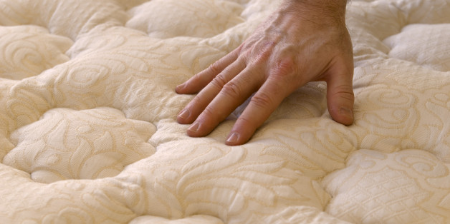
Perfect Mattress: 3 Key Tips to Buy The Ideal Mattress
Friday, November 20, 2020
All of us desire a good night's sleep. Here's where choosing the right mattress can help ensure a serene slumber all night long. When you're getting a new bed, it's crucial to invest in a high quality mattress. As we spend a third of lives sleeping, a suitable mattress will help you sleep better and thus improve your physical, mental and emotional well-being. Here are some tips to arm yourself with when you go shopping for a new mattress. 1 Test for comfort and support Make sure that the surface is both comfortable and supportive of your spine and posture. This means your spine should be in its natural curvature while you lie down flat on the bed. Have someone put his or her hand behind the small of your back. If the person's hand can move easily in the back without any gaps, the mattress is suitable for your posture. If there is a gap in between, the mattress is too hard and not supporting your back properly. If the person cannot get his or hand under your back, the mattress is too soft which causes your back to round up. Also lie on your side and stomach and examine if it's comfortable for you. Always take your time when shopping for a new mattress. 2 Find a mattress that suits your sleep style
How do you sleep? Some of us like sleeping on the back, some can only fall asleep when they are turned to one side and there are others who sleep soundly on their stomach. Your sleeping style is an essential factor when choosing the right kind of mattress.
2 Find a mattress that suits your sleep style
How do you sleep? Some of us like sleeping on the back, some can only fall asleep when they are turned to one side and there are others who sleep soundly on their stomach. Your sleeping style is an essential factor when choosing the right kind of mattress.
 For side sleepers: Get a soft or plush sleeping surface. With extra cushioning, you can prevent pressure-induced discomfort in your shoulders and hips. Plush mattresses offer extra comfort and plush support without the need for additional pillowtop padding.
For back sleepers: Opt for firm or extra firm mattresses as these help to support your back. Firm mattresses generally have a flatter top with no additional padding. Some of them also come with a firm edge support.
For stomach sleepers: Go for a slightly firmer surface so that your spine is properly aligned.
For those who with a combination of sleep styles: You may want to select something that is neither too firm nor too soft so it gives you the flexibility to support your different positions.
3 Consider your sleeping partner
Movements and motion transfers are something to consider if you share your bed with another person. You definitely don't want a mattress that bounces and shakes each time your partner roll to the side or gets up from the bed. Memory foam mattress can help to isolate movements to one side of the bed. You can also go for a hybrid of springs and foam as they usually come with transitional foam that alleviates motion.
For side sleepers: Get a soft or plush sleeping surface. With extra cushioning, you can prevent pressure-induced discomfort in your shoulders and hips. Plush mattresses offer extra comfort and plush support without the need for additional pillowtop padding.
For back sleepers: Opt for firm or extra firm mattresses as these help to support your back. Firm mattresses generally have a flatter top with no additional padding. Some of them also come with a firm edge support.
For stomach sleepers: Go for a slightly firmer surface so that your spine is properly aligned.
For those who with a combination of sleep styles: You may want to select something that is neither too firm nor too soft so it gives you the flexibility to support your different positions.
3 Consider your sleeping partner
Movements and motion transfers are something to consider if you share your bed with another person. You definitely don't want a mattress that bounces and shakes each time your partner roll to the side or gets up from the bed. Memory foam mattress can help to isolate movements to one side of the bed. You can also go for a hybrid of springs and foam as they usually come with transitional foam that alleviates motion.
 Check out our Top 5 Mattress Brands in 2018 post for more ideas.
Check out our Top 5 Mattress Brands in 2018 post for more ideas.
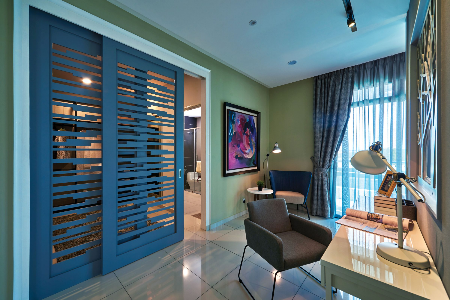
Impressive Studies: Inspirational Designs for Home Offices
Friday, November 20, 2020
Some of us bring our work home with us — but without a proper desk to work on, all those files and documents will seem out of place on the dining table. For those in need of some inspiration for a home office, we assembled some of the finest studies we have seen here for your perusal.
 A study doesn't necessarily require a significant investment in furniture but with some additional space afforded for a sliding partition, a quiet place of work can be guaranteed. Interior design by: Design Base
A study doesn't necessarily require a significant investment in furniture but with some additional space afforded for a sliding partition, a quiet place of work can be guaranteed. Interior design by: Design Base
 Doubling up on spaces is a valid approach to take when faced with a shortage of space. As pictured here, a viable solution is to combine the study with a generous walk-in wardrobe for intimacy. Interior design by: Jashen Interior
Doubling up on spaces is a valid approach to take when faced with a shortage of space. As pictured here, a viable solution is to combine the study with a generous walk-in wardrobe for intimacy. Interior design by: Jashen Interior
 The epitome of home offices, the kind all aspiring executives pine for, is pictured here. Encased in glass and saturated in white, this box simultaneously provides an overwatch position and solitude. Interior design by: Regal Violet
The epitome of home offices, the kind all aspiring executives pine for, is pictured here. Encased in glass and saturated in white, this box simultaneously provides an overwatch position and solitude. Interior design by: Regal Violet
 While being relegated to the corner of this bedroom, the wash of violet light marks out the larger area as belonging to the study. Interior design by: Design Base
While being relegated to the corner of this bedroom, the wash of violet light marks out the larger area as belonging to the study. Interior design by: Design Base
 Faced with a shortage of space in this bedroom, the study is instead made to project from the centre of the space, with a stand of shelves providing a form of containment for the bed. Interior design by: Design Base
Faced with a shortage of space in this bedroom, the study is instead made to project from the centre of the space, with a stand of shelves providing a form of containment for the bed. Interior design by: Design Base
 With an entire room to dedicate, this study is decorated with a certain degree of freedom that is uncommon for these normally compact spaces. Interior design by: A Piece of Art
With an entire room to dedicate, this study is decorated with a certain degree of freedom that is uncommon for these normally compact spaces. Interior design by: A Piece of Art
 This pictured study occupies a surprisingly small footprint on a staircase landing, turning a potentially unused space into a functioning workspace. Interior design by: Nu Infinity
This pictured study occupies a surprisingly small footprint on a staircase landing, turning a potentially unused space into a functioning workspace. Interior design by: Nu Infinity
 Just as with regular work, schoolwork tends to overflow into time spent at home, which necessitates a desk to work on. In this shared bedroom, the workspace is squeezed into a sunlit space beneath a bunk. Interior design by: GDY Design & Construction
Just as with regular work, schoolwork tends to overflow into time spent at home, which necessitates a desk to work on. In this shared bedroom, the workspace is squeezed into a sunlit space beneath a bunk. Interior design by: GDY Design & Construction
 This pictured study demonstrates the ultimate space-saving design for work surfaces, with a minimalist and monochromatic surface unfolded from a wall of cabinets. Interior design by: Sunpizz Kitchen & Home
This pictured study demonstrates the ultimate space-saving design for work surfaces, with a minimalist and monochromatic surface unfolded from a wall of cabinets. Interior design by: Sunpizz Kitchen & Home
 There's a certain comfort to be had in sleeping between partitions, and this study serves to provide a work surface as well as sheltering the bed in a safe berth. Interior design by: Sky Creation
There's a certain comfort to be had in sleeping between partitions, and this study serves to provide a work surface as well as sheltering the bed in a safe berth. Interior design by: Sky Creation
 Monochrome is used here to disguise the presence of a desk in and among the formation of bookshelves lining the wall. Interior design by: Nice-Style Refurbishment
Monochrome is used here to disguise the presence of a desk in and among the formation of bookshelves lining the wall. Interior design by: Nice-Style Refurbishment
 Another variation of shared spaces could see a secondary lounge turned into part of a study, as pictured here. Interior design by: Jashen Interior
Another variation of shared spaces could see a secondary lounge turned into part of a study, as pictured here. Interior design by: Jashen Interior
 Outside of individual rooms, there often is a hallway or a stairway landing that can provide sufficient space for a fully equipped study. Interior design by: Casa Indah Design
Outside of individual rooms, there often is a hallway or a stairway landing that can provide sufficient space for a fully equipped study. Interior design by: Casa Indah Design
 In compact bedrooms, the study surface often projects from the wall to be counted as an extension of bedside surfaces. Interior design by: Design Base
In compact bedrooms, the study surface often projects from the wall to be counted as an extension of bedside surfaces. Interior design by: Design Base
 In this child's bedroom, the study berth projects from the wall in monochromatic fashion to serve double duty as a decorative feature. Interior design by: Casa Indah Design
In this child's bedroom, the study berth projects from the wall in monochromatic fashion to serve double duty as a decorative feature. Interior design by: Casa Indah Design
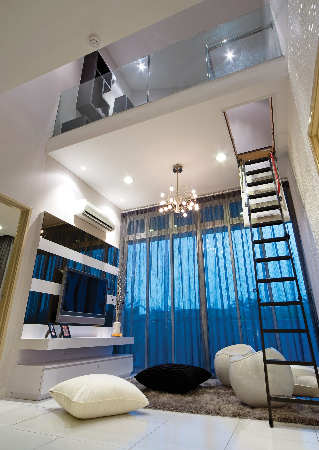
Choosing the Right Decorative Style for You
Friday, November 20, 2020
We've looked at kitchen countertop materials to describe various materials and how they may be suited to different personalities – but until now, we have not attempted to apply that same perspective to decorative styles. While decorative styles are probably as varied as people, we have been seeing some similar personalities gravitating towards particular aesthetic styles – which we will attempt to describe here for the benefit of anyone who might be in the midst of finding themselves and their preferred decorative style.
There are innumerable methods for analysing personality, but perhaps the most stringently tested theoretical framework would be that of the Big Five personality traits (openness, conscientiousness, extraversion, agreeableness, and neuroticism) – which will be the theory we adopt here in order to generally associate a particular decorative style with a dominant personality trait.
Openness
One of the first Big Five personality traits to be discussed is usually an individual's "openness to experience" – which roughly translates to a person's imagination and bravery to venture into uncharted waters. A person who is considered high in "openness" is regarded as being receptive to variety – easily gravitating towards learning, art, or other creative pursuits; while a person low in "openness" will display a preference for routine and representational works of art such as classical sculptures rather than abstract or interpretive designs.
 It takes a certain kind of bravery to seek out and incorporate unconventional features — such as the pictured loft space, made accessible with the addition of an industrial attic (loft) ladder. Interior design by: Nice-Style Refurbishment
It takes a certain kind of bravery to seek out and incorporate unconventional features — such as the pictured loft space, made accessible with the addition of an industrial attic (loft) ladder. Interior design by: Nice-Style Refurbishment
Historically accurate decorative styles such as faithful classicism may not be ideal for highly open individuals, who tend to prefer more varied, esoteric, or eccentric blends of styles to reflect their unique tastes. An open person would seek to forge a unique décor wherever possible – perhaps even going as far as rearranging entire floor plans to achieve something different. On the flipside, a less open person may gravitate toward styles that are more commonly represented in today's homes – or even a style representing something from childhood – while adhering to the convention of the day as much as possible.
Conscientiousness
Describing how people react to expectations of society at large, a person high in conscientiousness is more likely to consider rules both written and unspoken – such as is required when attempting to pay tribute to classical aesthetics. A highly conscientious person considers the experience of guests and visitors more than their own comfort, and will likely seek out a familiar décor – such as a variation of modern contemporary or classical modern style – to achieve a comforting ambience for the benefit of others while aiming for the hallmarks of luxury.
 A conscientious homeowner seeks to enforce implicit aesthetic rules rather than break them. Designer: Design Integra
A conscientious homeowner seeks to enforce implicit aesthetic rules rather than break them. Designer: Design Integra
A less conscientious individual may be seen as unpredictable and impulsive – and the right decorative style in this case is more a matter of personal preference than anything else. A person low in conscientiousness will likely gravitate towards a unique décor to represent their singular personalities, rather than adhering to convention for the satisfaction of guests.
Extraversion
The dichotomy of extraversion and introversion is perhaps the most popular of facets in personality research – a person is considered extroverted when they display an innate attraction for social activity, while an introvert is one who values alone-time over a stint of hanging out.
 The home of an extravert will more than likely present bold shades favoured by exuberant personalities. Interior design by: Surface R
The home of an extravert will more than likely present bold shades favoured by exuberant personalities. Interior design by: Surface R
Extroverts plan their home around social events, considering factors like the placement of extra seating and opting for bold colours rather than relying on a neutral palette. Introverts, on the other hand, will prefer to design for personal comfort and use softer colours in the creation of solitary spaces such as the study or the bedroom.
Agreeableness
A person is considered agreeable when they display a high sensitivity for the feelings of others – and their decorative choices might closer reflect the norms of modern styling, while less agreeable individuals may be seen as being more concerned with their own avenues of self-expression.
 Individuals high in agreeableness will tend to prioritise the familiarity of the neutral palette and twentieth-century designs over self-expression. Interior design by: Alpex Design
Individuals high in agreeableness will tend to prioritise the familiarity of the neutral palette and twentieth-century designs over self-expression. Interior design by: Alpex Design
The most intriguing and awe-inspiring decorative styles are to be found in the homes of less agreeable individuals – while one can expect something more contemporary, less esoteric, and with greater mass-appeal in the home of an agreeable person.
Neuroticism
As a measure of emotional stability and how well a person copes with stress, the trait of neuroticism is not as well associated with any particular decorative style as any of the four previously described personality traits – but some conclusions can still be drawn. For instance, a highly neurotic person with a stressful career may have no use or appreciation for a study — the mere sight of a workstation may elicit feelings of frustration in the home.
 A carefree personality, low in neuroticism, lets stress roll right off and wouldn't be the least bit disturbed by clutter or asymmetry. Interior design by: Pins Studio
A carefree personality, low in neuroticism, lets stress roll right off and wouldn't be the least bit disturbed by clutter or asymmetry. Interior design by: Pins Studio
Neuroticism also informs how one deals with clutter in the home, a person who is more inclined to keep spaces clean, and is also less willing to cope with the stress of a mess, will likely be on the lookout for storage options – while the messier and less neurotic among us may not have even considered cleaning up at all.
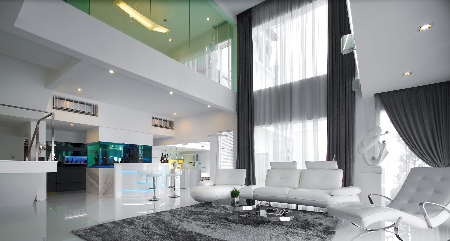
Cavernous Spaces: Living Rooms With Double Height Ceilings
Friday, November 20, 2020
Few parts of the conventional modern home feature high ceilings in the default plans, but the existence of a double-height ceiling in your living room is a rare opportunity to decorate boldly along the vertical axis with extra-long curtains and feature walls. If you're fortunate to have in your possession a canvas as generous as a living room with an extra high ceiling, here are some examples of what can be achieved in these spaces.
Immaculate Simplicity
 Interior design by: Regal Violet
Interior design by: Regal Violet
A dependance on the lighter side of the neutral palette expands the perceived space, as demonstrated by Regal Violet in this seating area. Utilising only grey fabrics to complement a background of white furnishings and finishes, the designers of the pictured seating lounge have managed to retain the voluminous quality of this space – with the grey elements drawing attention to the generous length of windows and to the centre of the seating arrangement.
 Interior design by: Regal Violet
Interior design by: Regal Violet
The prevalence of white and grey prepares the naïve eye for the glorious bursts of yellow light that become apparent from the centre of the lounge.
Monochromatic Modernity
Rendered with glossy black curves across the white finishes, this seating lounge is designed by Deseo Creativo to speak of the modern notion of elegance in simplicity. The monochromatic background of this home sets the eye up for the scant streaks of blue, while the simplistic palette creates a striking contrast against the ornate chandelier and the seamless expanse of marbled stone on the floor.
 Interior design by: Deseo Creativo
Interior design by: Deseo Creativo
Tropical Luxury
 Interior design by: DMZ Consultancy
Interior design by: DMZ Consultancy
The designers of the pictured seating lounge, DMZ Consultancy, craft a space suited for the tropics by relying on the lighter side of the neutral palette and an assortment of natural materials. The neutral palette saturates this living room in seamless stretches of stone on the floor and walls while wood decks the ceiling. Coupled with the exquisite view and splashes of greenery on the interior, the result is simultaneously luxurious and uplifting.
 Interior design by: DMZ Consultancy
Interior design by: DMZ Consultancy
Sunny Vibes
 Interior design by: Homlux Interior Furnishing
Interior design by: Homlux Interior Furnishing
In spaces gifted with generous windows such as this seating lounge with an extra-height ceiling, the choice of interior colour could be heavily swayed by the quality of view. Given that the wooden patio on the outside lies in full sunlight during the day, the practical use of louvres on the windows removes the need for extra-long curtains and enables the ingress of sunlight to complement the yellowish décor of interior.
 Interior design by: Homlux Interior Furnishing
Interior design by: Homlux Interior Furnishing
If you've settled on your approach to decorating the living room, here are some of our thoughts on lighting up the whole ensemble.
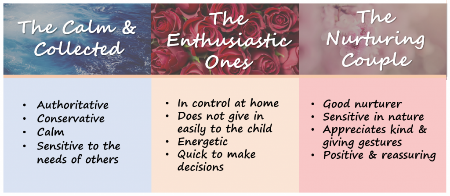
The Parenting Personality Palette
Friday, November 20, 2020
Nippon Paint Malaysia uncovers some of the key parenting personality traits based on your most frequented colour!
Did you know that your favourite colour reveals your dominant parenting style? Certain studies on the psychology of colour that have been carried out indicate that your preferred colour closely reflects some of your most dominant personality traits and strongest characteristics; even down to the various ways in which you behave towards your child (or children!). Take for instance, parents who prefer the blue hues are often regarded as more dependable and calm figures whilst those who gravitate towards brighter shades are known to be more assertive parents with a stronger personality. If you have more than ONE favourite colour, you may not have all the traits from one particular colour, but instead your parenting style comprises of a mixture of the various characteristics. Let’s say if you’re fond of hues such as pink and yellow, you may have a sensitive personality with enthusiastic vibes.


Read on below to find out if your favourite shade closely reflects your parenting traits.
The Parenting Personality Palette
It’s time to reflect upon your true colours and see if your favourite colour resonates closely with your respective parenting traits.
Nippon Paint Malaysia offers a wide range of colours that matches your parenting personality to the tee, ranging from dark to the lighter spectrum of hues, from warmer to cooler colour shades. There’s mocha brown, khaki green, rose-pink… and the list goes on!
How about taking inspiration to the next level and reflecting your parenting personality colour(s) on the walls of your home?
Here are some colours from Nippon Paint to consider for your next redecorating project at home featuring your parenting personality colour complemented with other suitable shades:
The Calm & Collected (Blue)
The colour blue is recognised as the most calming shade of the colour spectrum, which makes it one of the top choices of favourite colours around the world. If you find yourself not overreacting to your children most of the time, the colour blue reflects your calm persona best.

To create overall soothing vibes all around your home, select colours such as light green, or a light peach to fully complement your blue themed walls. If you’re a true-blue fan, you could even opt for pairing the palest blue with navy without overwhelming your entire room.
The Enthusiastic Ones (Red)
Red is known to be a strong colour that resonates well amongst those that carry a more dominating trait. Parents who favour the colour red are typically strong-willed – and much like the colour, they do not easily give in to a child’s requests.

However, in a home, everything in the colour red may be too overwhelming… so why not try balance red with softer shades such as light grey or neutral beige tones for a greater contrast?
The Nurturing Couple (Pink)
Those who like the colour pink often convey a reassuring ear to their children and see things in a positive light in most situations. While light pink is gentler on the eyes; some are a fan of brighter pinks such as fuchsia which also look great on walls if paired with clean colours such as beige or the lightest shade of yellow.

If you’re a fan of lighter shades of pink, try complementing this with light pink tones for a classy look or opt for striking blue for fun vibes.
The Fair Minded (Green)
A colour that reflects the personality of a calm yet logical and analytical figure who often takes a more supportive and nurturing approach at most instances. If you find yourself reasoning with your child or children over their actions, green is the colour for you. Being a neutral shade, green can be paired with almost any shade on the colour wheel, depending on the desired ambience for your room.

To fully resonate with your calm personality, go along the lines of a pastel pink with a soft peach shade. Otherwise, for those who prefer strong green undertones, match your green feature wall with a light oak brown shade for a down-to-earth vibe.
The Cool Ones (Yellow)
Yellow represents the colour of enthusiastic parents who are often easily excitable over most things, their children included. When you think yellow, the first word that comes to mind is ‘bright’! …which makes the colour an easy feat to match with two extremes, either choosing to pair it with a pale colour or opting for colours on the darker end of the spectrum.

For a dark colour, shades such green or grey makes for a good contrast against any yellow-themed feature wall. For an earthier tone, opt for colours such as brown.
Here are some top tips to consider when repainting your home!
- To ensure a safe environment for your child/children, try a child-safe odorless paint from Nippon Paint’s Child Wellness Range (For more information, log on to: www.nipponpaint.com.my/childwellness)
- Opt for colours which are contrasting to your feature wall for a vibrant look
- Measure the space of each room to get an estimated amount of paint required
- Care for the walls of your home by ensuring proper preparation is carried out (i.e priming the walls prior to painting)
- Have a rough idea on your overall colour theme. Fret not if you’re unsure of what colour suits your room best and opt for expert advice from Nippon Paint’s Colour Scheme Professional Services at www.colourscheme.com.my to get the perfect recommended shades for your rooms.
If you’re looking to repaint the walls of your home but are unsure where to begin, visit www.nipponpaint.com.my to spark some inspiration!
Text and images by Nippon Paint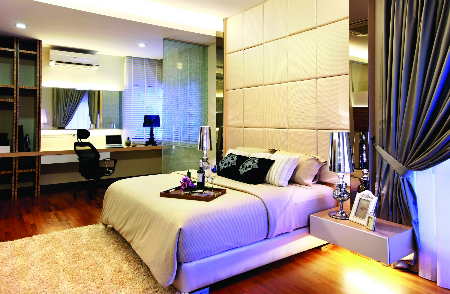
Enigmatic Bedrooms Decorated With Purple
Friday, November 20, 2020
From the sea snail shells found along the ancient Phoenician coastlines of Tyre to the togas of Roman senators, and on to as recent a time as Queen Elizabeth II’s coronation, the colour purple has been associated with mystery, power, royalty – and the height of bravery in the case of the Purple Heart. Despite the connotations, spaces painted in purple are relatively rare to come by – especially in this age of neutral-coloured interiors and compact spaces. But the results are undeniably awe-inspiring whether purple is applied as an accent or as a base colour. To illustrate the sensuous effects of purple – and perhaps to inspire you to try something different in the bedroom – we bring your attention to a selection of bedrooms brought to deeply soothing and enigmatic levels with the mere addition of violet-coloured light or materials.
Beguiling Accent
 Interior design by: Turn Design
Interior design by: Turn Design
Perhaps the very first and easiest thing to try when experimenting with purple, or any other bold shade, is to inject the colour with the aid of a lighting fixture. Utilising ultraviolet bulbs intended for water purification systems would not be recommended for health reasons – ultraviolet light of the UVB variety is a germ killer and equivalent to sunlight in terms of the damage it can cause – but "black-lights", UVA bulbs, or even regular bulbs tinted purple will provide a harmless wash of violet-coloured light. This equivalent of dipping one's toe into unfamiliar waters enables slight adjustments – leading to possible results such as the pictured bedroom decorated by Turn Design. The purple glow here serves as a tentative accent for the neutral-coloured space, delivered to the sunlit side of the bed via a pair of bedside lamps.
Absolute Saturation
 Interior design by: Space In Design
Interior design by: Space In Design
If the alluring quality of purple illumination has won you over, you may find yourself surprised by the delightful effects of a predominantly white room fully saturated in violet light. As demonstrated by Space In Design with the pictured bedroom, the architectural finishes of the walls and ceiling have been deliberately left featureless and white in order to extend the reach of purple light. The result is that all the plain white surfaces are rendered intriguing with a fluorescent sheen, while slivers of white and yellow illumination are used to segment the background and provide the space with a measure of visual depth.
Prominent Display
 Interior design by: Jashen Interior
Interior design by: Jashen Interior
If you are looking for more control over the introduction of bold shades like purple in the bedroom, consider utilising fabrics dyed in your prefered shade of violet instead of attempting to fine-tune the highly variable effects of lighting. As demonstrated by Jashen Interior in the pictured bedroom, the introduction of purple is done through carpeting and drapery in light and dark shades, securing the colour's place in the white space regardless of the quality of light. The net effect of this combination is one of mutual support – the white background brings attention to the purple accents while the various shades of violet lend the crisp white space a contour of uplifting opulence.
Background Flavour
 Interior design by: Surface R
Interior design by: Surface R
With some comfort in its balanced use, one could take the saturation of purple to the maximum by applying various shades of violet in architectural finishes. The result of painting both the walls and the decorative headboard in the same shade of purple is a cohesive background that is instantly soothing to the eye, as in the pictured bedroom designed by Surface R, while the contrasting of dark wood flooring and a sprinkling of neutral coloured planes against the purple background creates a space that simultaneously speaks of fun-loving vibes and regal poise.
Click here to read about decorating various spaces in white.
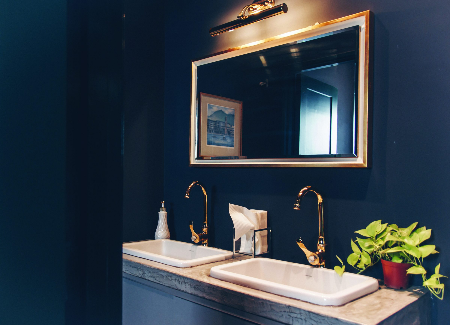
Sunlit Bathrooms: Inspirational Modern Washrooms Drenched in Natural Light
Friday, November 20, 2020
In the words of the American author Annie Dillard: "There is a muscular energy in sunlight corresponding to the spiritual energy of wind."—and since nothing paints a space quite like natural light does, we rounded up the most inspiring washrooms from recent memory to help you find ways of incorporating a generous window into your bathroom.
Augmented Shadows
 Interior design by: Bo Design
Interior design by: Bo Design
[gallery size="medium" ids="58660,58658,58657,58656,58653,58652" orderby="rand"]
Violet Tone
 Interior design by: ID Industries
Interior design by: ID Industries
Sky Blue
 Interior design by: Space In Design
Interior design by: Space In Design
[gallery columns="2" size="large" ids="58547,58546"]
[gallery columns="2" size="large" ids="58691,58692"]
Sea Green
 Interior design by: A Piece of Art
Interior design by: A Piece of Art
 Interior design by: A Piece of Art
Interior design by: A Piece of Art
 Interior design by: SQFT Space Design Management
Interior design by: SQFT Space Design Management
Sunny Yellow
 Interior design by: Gusto Design & Build
Interior design by: Gusto Design & Build
 Interior design by: Gusto Design & Build
Interior design by: Gusto Design & Build
 Interior design by: Hoe & Yin Design Studio
Interior design by: Hoe & Yin Design Studio
Golden Tangerine
 Interior design by: Design Integra
Interior design by: Design Integra
Brick Red
[gallery columns="2" size="medium" ids="58567,58568"] Interior design by: SNG Conceptwerke
Interior design by: SNG Conceptwerke
Pristine White
[gallery columns="2" size="medium" ids="58699,58700"] Interior design by: Regal Violet
Interior design by: Regal Violet
 Interior design by: PSQ
Interior design by: PSQ
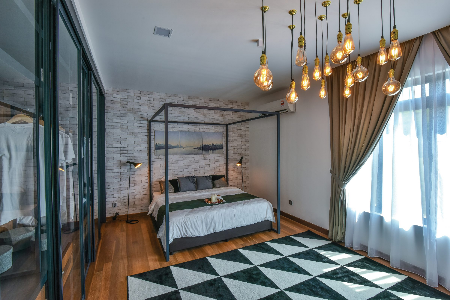
4 Bedroom Styles To Inspire You
Friday, November 20, 2020
Undecided as to whether you find comfort in simplicity, or pine for the ornate antiquities of times past? This summary of common bedroom styles will point you in the right direction.
It takes a highly proficient mind-reader to accurately determine the kind of decorative style that appeals to any individual - and while the most seasoned practitioners of interior design may be able to guess your preferences from a few brief interactions, there is no better judge of one’s own position on the spectrum of order and chaos than the self.
While the less private areas of a home may feature a décor to impress, the bedroom is largely a concern for the occupant - so before settling on your choice of furniture and materials for the bedroom, take a look at this introduction to the most common styles of décor and decide on which speaks to you the most.
Industrial Chic
 Interior design by: Homlux Interior Furnishing
Interior design by: Homlux Interior Furnishing
Some personalities gravitate towards ornate classicism for the grandeur, and others find minimalism appealing for the sake of simplicity – but the aesthetics of industrial style appeals to those who seek a lightweight décor imbued with aged sophistication. As with the pictured bedroom decorated by Homlux Interior Furnishing, a bedroom can be made industrial as a whole – with a strict reliance on materials commonly found in places of work, or a more eclectic décor can be formed with a sprinkling of a few bare light bulbs hanging by their wires, pieces of patinated metals, and stretches of exposed brickwork.
Mod Pop
 Interior design by: Casa Indah Design
Interior design by: Casa Indah Design
It goes without saying that the neutral palette dominates most interiors in the present age, but an over-reliance on the popular colour scheme may result in a sterile and impersonal décor. Rather than completely adhering to the confines of the neutral palette, designers and homeowners tend to agree that bedrooms should be canvases for expressions of personality.
 Interior design by: Casa Indah Design
Interior design by: Casa Indah Design
The pictured bedroom is saturated with neutral hues in adherence to modern convention, but the space is marked out as belonging to a youthful urbanite with vibrant splashes of yellow – presented in well-lit box niches against the subtle background of the walls.
 Interior design by: Casa Indah Design
Interior design by: Casa Indah Design
Contemporary Elegance
 Interior design by: Surface R
Interior design by: Surface R
Between the overstuffed upholstery of tradition and the bare-bones designs of minimalism lies the modern definition of luxury - as depicted in cosy bedspreads, plush curtains, and thick mattresses of high-end hotel rooms. In the pictured bedroom, Surface R demonstrates the kind of elegant results to be expected with a focus on comfort.
 Interior design by: Surface R
Interior design by: Surface R
The neutral-coloured décor is made inviting by saturation in rich textiles and brought to opulent heights with an abundance of reflective surfaces, darkly-lacquered wood, and strategically placed lighting fixtures to soften the straight lines and stark edges of modern design.
 Interior design by: Surface R
Interior design by: Surface R
Tip: Keeping the colours subtle and letting the fuzzy textures speak for themselves gets you the comfort, while dark wood and reflective metals provide the elegance.
 Interior design by: Surface R
Interior design by: Surface R
Countryside Charm
 Interior design by: JCS Design Project
Interior design by: JCS Design Project
There are few substitutes for the exquisite and romantic qualities of classicism as a style of interior decoration — largely as it entails a dependence on ornate furnishings that have been passed over by the masses in favour of more affordable and mass-produced offerings, resulting in classical furnishings being considered more valuable due to the relative scarcity of historically accurate designs. As in the pictured bedroom decorated by the JCS Design Project, when combined with soft colours, delicate fabrics, and floral motifs, the result is a feminine décor that speaks of wealth in the quaint serenity of the countryside.
 Interior design by: JCS Design Project
Interior design by: JCS Design Project
Tip: Classical furnishings are just as versatile as those of the modern variety: surround reproductions with decorative details to reinforce a traditional décor or draw attention to authentic pieces by keeping the scene clear.
 Interior design by: JCS Design Project
Interior design by: JCS Design Project
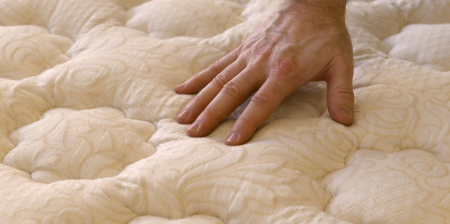
Perfect Mattress: 3 Key Tips to Buy The Ideal Mattress
Friday, November 20, 2020
All of us desire a good night's sleep. Here's where choosing the right mattress can help ensure a serene slumber all night long. When you're getting a new bed, it's crucial to invest in a high quality mattress. As we spend a third of lives sleeping, a suitable mattress will help you sleep better and thus improve your physical, mental and emotional well-being. Here are some tips to arm yourself with when you go shopping for a new mattress. 1 Test for comfort and support Make sure that the surface is both comfortable and supportive of your spine and posture. This means your spine should be in its natural curvature while you lie down flat on the bed. Have someone put his or her hand behind the small of your back. If the person's hand can move easily in the back without any gaps, the mattress is suitable for your posture. If there is a gap in between, the mattress is too hard and not supporting your back properly. If the person cannot get his or hand under your back, the mattress is too soft which causes your back to round up. Also lie on your side and stomach and examine if it's comfortable for you. Always take your time when shopping for a new mattress. 2 Find a mattress that suits your sleep style
How do you sleep? Some of us like sleeping on the back, some can only fall asleep when they are turned to one side and there are others who sleep soundly on their stomach. Your sleeping style is an essential factor when choosing the right kind of mattress.
2 Find a mattress that suits your sleep style
How do you sleep? Some of us like sleeping on the back, some can only fall asleep when they are turned to one side and there are others who sleep soundly on their stomach. Your sleeping style is an essential factor when choosing the right kind of mattress.
 For side sleepers: Get a soft or plush sleeping surface. With extra cushioning, you can prevent pressure-induced discomfort in your shoulders and hips. Plush mattresses offer extra comfort and plush support without the need for additional pillowtop padding.
For back sleepers: Opt for firm or extra firm mattresses as these help to support your back. Firm mattresses generally have a flatter top with no additional padding. Some of them also come with a firm edge support.
For stomach sleepers: Go for a slightly firmer surface so that your spine is properly aligned.
For those who with a combination of sleep styles: You may want to select something that is neither too firm nor too soft so it gives you the flexibility to support your different positions.
3 Consider your sleeping partner
Movements and motion transfers are something to consider if you share your bed with another person. You definitely don't want a mattress that bounces and shakes each time your partner roll to the side or gets up from the bed. Memory foam mattress can help to isolate movements to one side of the bed. You can also go for a hybrid of springs and foam as they usually come with transitional foam that alleviates motion.
For side sleepers: Get a soft or plush sleeping surface. With extra cushioning, you can prevent pressure-induced discomfort in your shoulders and hips. Plush mattresses offer extra comfort and plush support without the need for additional pillowtop padding.
For back sleepers: Opt for firm or extra firm mattresses as these help to support your back. Firm mattresses generally have a flatter top with no additional padding. Some of them also come with a firm edge support.
For stomach sleepers: Go for a slightly firmer surface so that your spine is properly aligned.
For those who with a combination of sleep styles: You may want to select something that is neither too firm nor too soft so it gives you the flexibility to support your different positions.
3 Consider your sleeping partner
Movements and motion transfers are something to consider if you share your bed with another person. You definitely don't want a mattress that bounces and shakes each time your partner roll to the side or gets up from the bed. Memory foam mattress can help to isolate movements to one side of the bed. You can also go for a hybrid of springs and foam as they usually come with transitional foam that alleviates motion.
 Check out our Top 5 Mattress Brands in 2018 post for more ideas.
Check out our Top 5 Mattress Brands in 2018 post for more ideas.
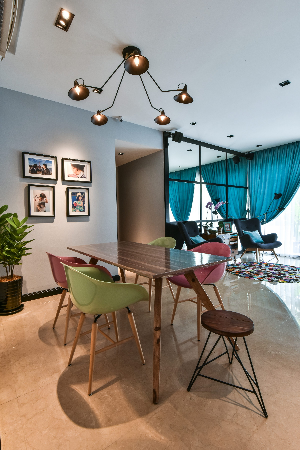
How to Select the Best Dining Table for Your Dining Room
Friday, November 20, 2020
The dining table is most often the central feature of dining spaces, contributing the most towards the décor by virtue of their size - which makes their selection all the more crucial.
The dining room is probably the one part of a home that sees the most people at any time - and whether people are just passing through or sitting down for meals, the table will have an impact on how diners perceive the space, the home, and the homeowner. As the selection of dining room furniture will likely be an event that does not occur very often, we wanted you to be as informed as possible before you set out on your journey towards your new dining table.
Material
 Interior design by: Viincology
Interior design by: Viincology
The kind of material that your dining table is made out of will have an effect on its lifespan and its appearance. Long-lasting materials such as hardwoods, metals, tempered glass, stone, and even mould-injected plastics are preferred for dining tables that are expected to endure many years of heavy use. Conversely, lightweight or flat-pack furniture composed of veneered wood composites such as plywood or fibreboard are made with mobility and affordability in mind, these materials are preferred for short-term arrangements by virtue of their being easier to pack and transport by design.
 Interior design by: Viincology
Interior design by: Viincology
Lightweight composite materials such as plywood or fibreboard are known to be significantly less durable, as they show a tendency to warp when subjected to excessive moisture or heat. Tougher natural materials such as hardwoods and stone tend to be porous, which entail regular maintenance with coats of varnish or sealer to prevent unintended staining from everyday use.
 Interior design by: SNG Conceptwerke
Interior design by: SNG Conceptwerke
Due to their being porous and softer than metal, wooden surfaces entail a greater degree of care to ensure their longevity. Oil-based varnishes should be applied to wooden surfaces at the point of manufacture - and periodically afterwards to prevent unintentional staining. Despite the higher level of maintenance required, metal furnishings tend to rust - especially when used outdoors, while wooden furnishings take on a characteristic smoothness and polished sheen as they age.
Size
 Interior design by: Hoe & Yin Design Studio
Interior design by: Hoe & Yin Design Studio
Having too large a table surface will result in a cramped dining space, while restricting diners to a small surface leads to elbows bumping in uncomfortably close quarters. It is the recommendation of most decorators to provide each diner with around 60 to 70 centimetres (or 24 to 28 inches) of space for adequate elbow room, and around 90 centimetres to 1.3 meters (or 36 to 50 inches) between a dining table and the surrounding walls for diners to comfortably get in and out of their seats.
Shape
 Interior design by: IDS Interior Design
Interior design by: IDS Interior Design
The shape of your dining table will determine the number of diners you can host and will affect the space it occupies. While round tables are capable of accommodating a greater number of diners, they tend to appear larger in small dining spaces - the conventional rectangular dining table takes up the most space, needing long and narrow spaces to avoid appearing overly large.
 Interior design by: IDS Interior Design
Interior design by: IDS Interior Design
To calculate the number of diners appropriate for a round table: multiply the diameter of a table by the value of Pi (π: 3.14) and divide the result by the amount of space needed for each diner. Using the previously mentioned minimum of 60 centimetres (or 24 inches) of space needed per diner, a round table with a diameter of 1.5 meters can easily accommodate 7 diners, or up to 8 diners with a negligible reduction in elbow room - while a rectangular table of similar size (at 1.5 meters long) can only seat a total of 6 diners – one at each end and two along each length.





